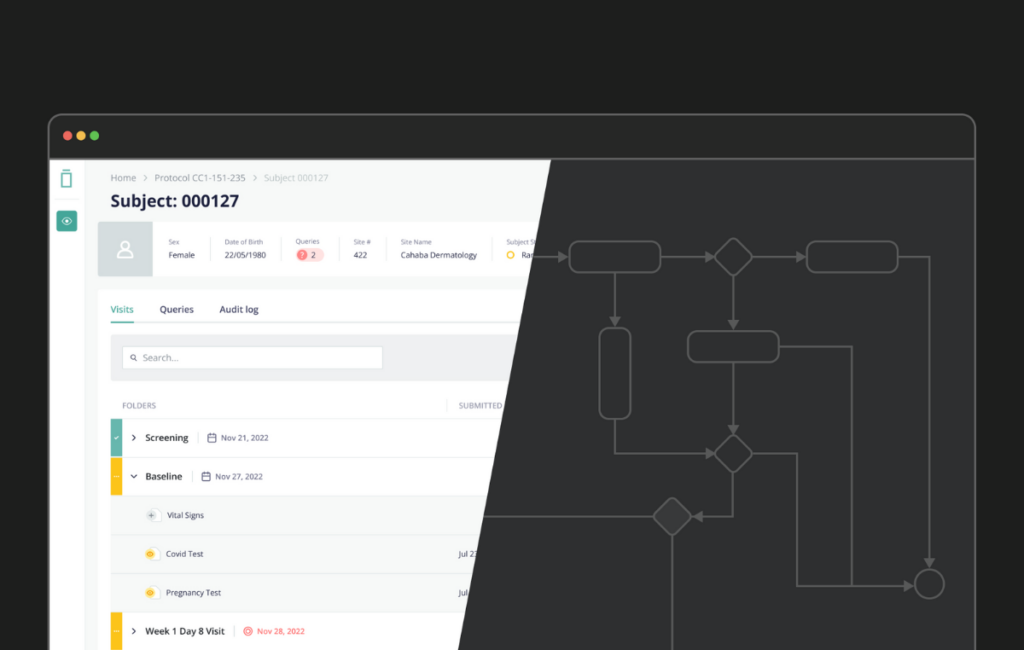Introduction
Risk-based monitoring (RBM) is an approach to clinical trials that uses data from previously conducted studies to predict the risk of a patient experiencing certain side effects. This method helps ensure the safety of patients by identifying and minimizing risks at the start of the study as well as continuously evaluating these risks throughout the study duration. In addition, RBM performs extensive research into all aspects of study design, including:
- Protocol development
- Study conduct
- Clinical research sites
This approach allows sponsors to identify potential issues as early as possible so that corrective actions can be taken before there is any impact on patient safety, data integrity, or quality control from missing data or poor documentation of patient events.
What is Risk-Based Monitoring?
Risk-Based Monitoring (RBM) focuses on identifying risks early in the study and ensuring that these risks are addressed effectively before they become serious issues. To achieve this, RBM looks at a few key characteristics of patients who have been recruited for clinical trials in the past such as gender, age group, and medical condition. The results are then grouped together into cohorts (or groups), based on these characteristics.
As this data is collected through each study, sponsors of new drug development programs can review this data and predict how individuals will react to new medications or investigational therapies being studied more quickly than ever before. In addition, as monitors enter patient data into the system, RBM provides sponsors with an opportunity for greater transparency through improved reporting of adverse events (AEs) in real time.
In this sense, RBM is a proactive approach to clinical trials. In contrast to traditional monitoring, which simply identifies problems as they occur and then reacts to them, RBM involves ongoing monitoring of the trial on a running basis. Traditional monitoring approaches may have been effective 20 or 30 years ago when clinical trials were small and relatively short term in duration; however, today’s large-scale, long-term clinical trials require a more comprehensive approach for effective management.
Core and Optional Activities
There are two types of activities that can be used in the RBM process: core and optional. Core activities are mandatory for all clinical trials, while optional activities are not required but may be chosen as part of a customized RBM process.
Core/Optional Activities:
- Risk Based Monitoring (RBM) is a core activity. This activity involves creating a plan to monitor risk factors in order to identify any changes that could affect patient safety or study conduct, such as protocol deviations or adverse events (AEs).
- Data Management Plans (DMPs) are an optional activity – while they are not always required by regulation, they can be and are often times used when the sponsor wants to streamline their data collection process and make sure that all protocols have been followed correctly throughout the study period
Benefits of RBM in Clinical Trials and RBM Process
By using a systematic approach to monitor patient safety and data quality, risk-based monitoring is able to improve clinical trial quality, efficiency and compliance with good clinical practice (GCP).
Benefits of RBM in respect to the overall trial conduct include:
- Prioritize patient safety by identifying problems early so that they can be addressed before serious harm occurs. This helps protect the integrity of your trial data from bias or error.
- Efficiently utilize resources by allowing you to focus on areas where there are higher risks for errors or problems rather than spending time on every aspect equally.
- Help to reduce the overall costs associated with clinical trials.
- Provide more efficient monitoring by combining activities into one report instead of multiple reports.
- Increase efficiency by automating processes such as form completion and data entry into electronic systems.
- Improve patient experience through real-time data collection from any location at any time via mobile devices or web portals.
The implementation of risk-based monitoring in clinical trials offers several benefits to both the sponsor and the patient.
The implementation of risk-based monitoring in clinical trials offers several benefits to both the sponsor and the patient. The primary benefit is that it helps to reduce the number of patients exposed to the study drug, which reduces overall costs at every step in a clinical trial’s lifecycle – from initial development through manufacturing and distribution. This is an important consideration as many sponsors have a very limited budget when it comes to developing new drugs. In addition, reducing unnecessary exposure will also help ensure that all participants receive access to scarce treatments if they are needed during or after the trial.
Risk-based monitoring encourages sponsors to carefully assess whether their product should be tested on people who have different levels of health risks associated with using the product. In addition, RBM helps indicate to sponsors whether this type of monitoring should occur throughout all trial phases or only certain phases like preclinical studies before going into human trials, depending on the product and protocol design.
Conclusion
We’ve explored the question of what is risk-based monitoring in clinical trials and why it’s important. Risk-based monitoring is a great method to reduce costs and increase efficiency for your clinical trial and can also help keep you on track with your trial goals. It allows you to monitor only those parameters that are most relevant, providing a cost effective means of improving quality control while ensuring that you stay within budget.
As such, RBM is an important tool for both sponsors and patients alike; they want the research conducted safely while also being cost efficient.



